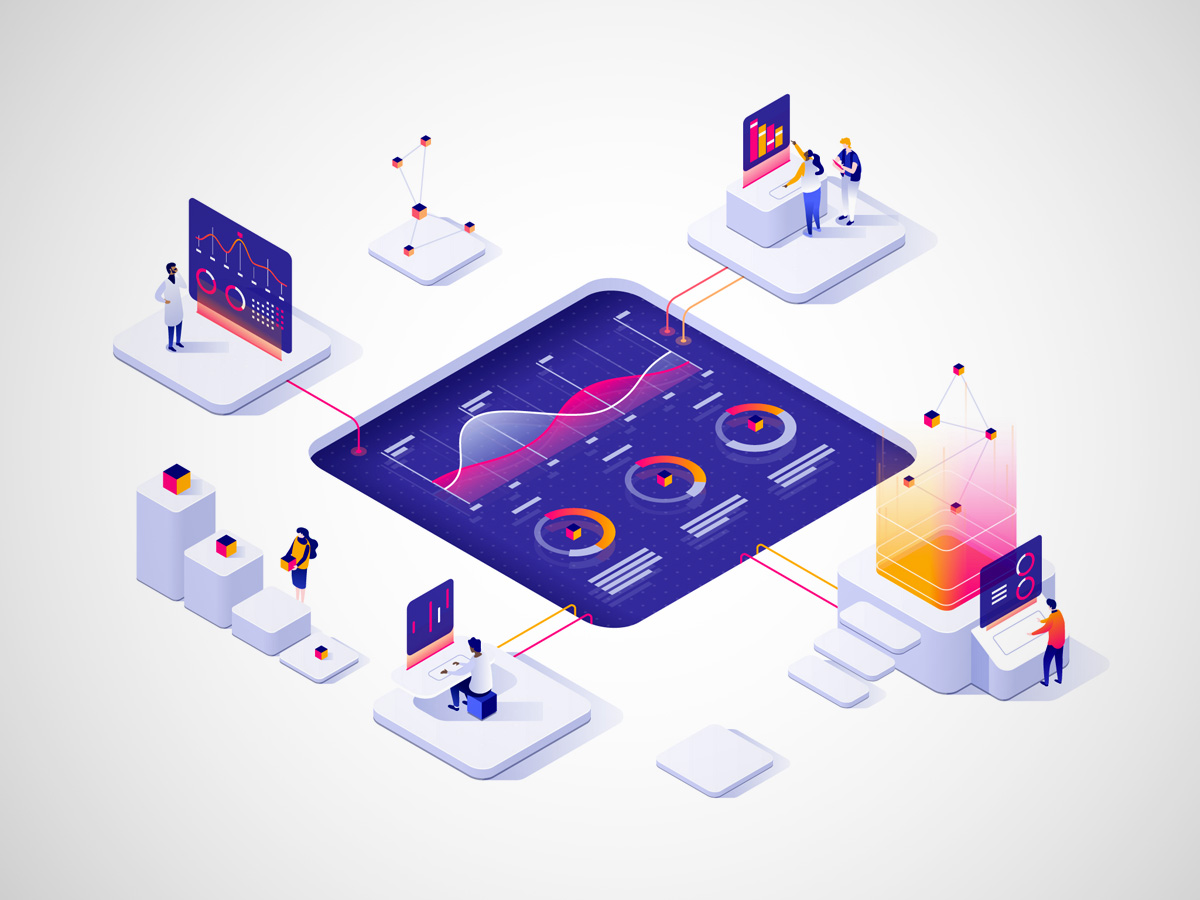

Strategic, data-driven insights can help your organization solve complex business problems. But if you don’t deliver those insights in the form of high-quality design, you risk obscuring the most important data — and even missing key opportunities. LRW’s vice president of design, Marcus Lee, explained how to develop designs that deliver the maximum impact last Tuesday as the featured guest at the Strategic Content Summit, a weekly webinar series for marketing and communications leaders. The session was hosted by Amy Balliett, Killer Visual Strategies CEO and author of Killer Visual Strategies: Engage Any Audience, Improve Comprehension, and Get Amazing Results Using Visual Communication.
“Insights design, as I see it, is really the narrative bridge between the raw solution to these complex business problems and the visualized articulation of that solution — the insight,” said Lee. “And that can take a number of forms, from an infographic to a video to a microsite to a dashboard. But really the goal is always to reduce the friction between that insight and the client’s ability to understand and absorb that insight, and really successfully evangelize that insight within their organization.”
Lee went on to outline the five key considerations creative teams must keep in mind as they create effective insights design to move and influence internal decision makers.
When it comes to creating meaningful content that will live — and hopefully gain traction — within an organization, you must first understand the aesthetic preferences of that client and of any relevant stakeholders. The way they measure success, the way they identify with certain colors and imagery, and the way they’re used to seeing stories told should all be taken into account.
“It’s really asking the questions, adding that consultative, strategic layer to the engagement, and trying to uncover what is the visual language going on inside the organization, and how do we appropriate that language as we tell the story and communicate the insight,” Lee explained.
Is the insight you’re delivering a snapshot of a moment in time? Or will it live on within the organization for weeks, months, or even years?
“If this is … an insight that’s going to guide the organization for a year, the visual communication couldn’t be more important,” Lee said.
Asking these questions won’t just inform your understanding of the insight itself — it’ll also help you determine what medium is best for presenting your design. Should it be a poster that will be framed on the wall? Should it be an interactive microsite that auto-updates with new data? These are all key questions to consider.
In a pandemic in which global status seems to change daily, considering shelf life is particularly important, Balliett added.
Consultative design is about finding out as much as you can about where the design is going to live — and who will see it.
“The audience your client is going to be taking this insight to — what is the most resonant visual storytelling method for them? Is their boss really going to respond better to a video than they do to a static report?” Lee explained. In asking these questions, you’re likely to uncover more effective and innovative ways to deliver that content.
Knowing the strategic goal of the project, too, can help you identify a customized design approach that speaks to multiple audiences simultaneously.
When design is used as a spotlight, it funnels attention to a single, central idea or recommendation. When used as a floodlight, the design creates a container for several ideas and how they’re related to each other. These two very different goals lead to very different designs.
Interactive content is particularly suited to the floodlight approach.
“[Interactive] is a great way of getting them excited and making them feel like they’re the ones in the driver’s seat, they’re the ones in control, and that’s the power of interactive content,” Balliett said.
Lee agreed.
“Everything we navigate now is an interactive experience,” he said. “When you want to be able to navigate through information and pull out what is relevant to you out of a host of options, interactivity is really the only way to go.”
What’s more, this type of content is becoming more accessible for brands.
“Interactive, as it becomes more and more accessible from an investment perspective, I think it really is the future,” Lee said.
The last lever has to do with helping clients understand the power of visual storytelling in internal comms.
“If a client has a business problem and isn’t willing to invest in packaging the answer to that critical business problem in a compelling way, they’re not getting their money’s worth,” Lee explained. “To spend all this money creating an engine with no thought for the car that it’s going in makes absolutely no sense.”
For more on the importance of insights design in internal comms, watch the full conversation between Lee and Balliett here.
You must be logged in to post a comment.